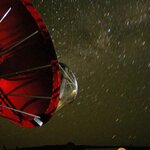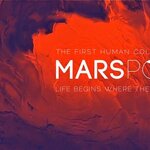Space

Pluto really does seem to have captured people’s imagination. With the announcement that the (dwarf) planet is larger than we thought, a neighbour was asking me how one measured its size.
This got me looking up some values in ‘Pluto Is Larger Than Thought, Has Ice Cap, NASA Probe Reveals’, from space.com.
The new measurement of Pluto is 1,473 miles (2,370 kilometers) across
The previous estimate from Earth was 1,430 miles (2,301 km).
This makes Pluto bigger than Eris 1,445 miles (2,326 km) in diameter.
But I wondered — Eris was also measured from Earth, so could the value for Eris…

Pluto does not meet the definition of a planet but as we
will see that does not diminish it. Far
from a random and uninteresting chunk of ice, with little local gravitational
influence on it’s neighborhood, it is an example of binary planetoids with tantalizing features.
UPDATE
Pluto indeed has a young geologically active surface. The images show us mountains that may still be in the process of formation, and a general lack of cratering compared to bodies, like our moon, which have low internal heat (relative to the heat of melting of their crust). Under the…

ET phone Earth!
We could be on the verge of answering one of the essential questions of humanity that has captivated our minds for centuries.
As we advance in technology the search for extraterrestrial life becomes more sophisticated and promising. But the real frosting on the cake would be finding any signs of an intelligent alien civilization. The Search for Extraterrestrial Intelligence (SETI) project is looking carefully for these signs, listening to the Universe that may be full of potential ET signals. In an interview, key figures of alien life hunting discuss the ongoing search…

There may be far fewer galaxies further out in the Universe then might be expected, suggests a new study based on simulations and published this week in the Astrophysical Journal Letters.
The simulations show the first results from the Renaissance Simulations, a suite of extremely high-resolution adaptive mesh refinement (AMR) calculations of high redshift galaxy formation and hundreds of well-resolved galaxies.
"Most critically, we show that the ultraviolet luminosity function of our simulated galaxies is consistent with observations of redshift galaxy populations at the bright end of…

It is well known that muscles need resistance (gravity) to maintain optimal health, and when they do not have this resistance, they deteriorate. A new report published in the July 2015 issue of The FASEB Journal, however, suggests that this might not be true for all muscles, offering hope that there may be ways to preserve muscle mass and strength for individuals in low-resistance environments, whether it be the microgravity of space, extended periods in a hospital bed, or a 9-5 job behind a desk.
"Maintaining muscle mass and good muscle repair is key to all areas of our lives: successful…
MarsPolar, a newly created international venture has started raising funds for their bold project to establish a permanent human colony on Mars. The team behind the project wants to collect at least $100.000 to cover the initial costs of their future endeavor.
Their first goal is to build a base in Dubai, United Arab Emirates (UAE) that will allow taking first steps towards journey to Mars, specifically contracting new partners or hiring engineers and scientists.
The team encourages everyone to support the pioneering journey to the Red Planet and offers a set of the mission-…

Today, 30th June is asteroid day, to raise awareness of the searches astronomers do to detect and eventually deflect asteroids. This is your chance also to actually do something about them by signing the 100x petition (which has been signed by many famous astronomers and astronauts).
An asteroid impact is one of the few natural events we can actually prevent with our technology (unlike volcanoes, earthquakes and tsunami). With a few years or decades of warning, we can deflect them rather easily. But to find them in good time, first we need to detect them.
The main focus here is on smaller…

In order to send first human to Mars, plenty of pioneering activities must be taken. It’s a journey on an unprecedented scale in the history of human spaceflight, but like any other voyage, even the longest one, starts with a small, seemingly insignificant step.
That’s what MarsPolar, a new international venture does recently to prepare for a challenging and bumpy road to the Red Planet.
The project, based in Dubai, United Arab Emirates is constantly building its team and expands its advisedly-built web of future partners and sponsors. The reason is that a demanding trip to Mars would…

So, you are invited to a dinner by extraterrestrial hosts. Do you accept the invitation? And if so, which foods and beverages would be safe to eat? And, could you actually live long term on ET food? Or the other way around, if you have an ET guest, what food could you safely serve for them to eat?
First, it's not likely that you would enjoy a dinner served in a sauce of liquid nitrogen or liquid methane :). So, let's assume that they are organic carbon based lifeforms from an Earth-like world or at least an environment with Earth type temperatures and conditions (including perhaps living in…
So, you are invited to a dinner by extra terrestrial hosts. Do you accept the invitation? And if so, which foods and beverages would be safe to eat? And, could you actually live long term on ET food?
First, it's not likely that you would enjoy a dinner served in a sauce of liquid nitrogen or liquid methane :). So, let's assume that they are organic carbon based lifeforms from an Earth like world or at least an environment with Earth type temperatures and conditions (including perhaps living in oceans of icy moons). But - organic of course doesn't equate to edible, that's a bit like…